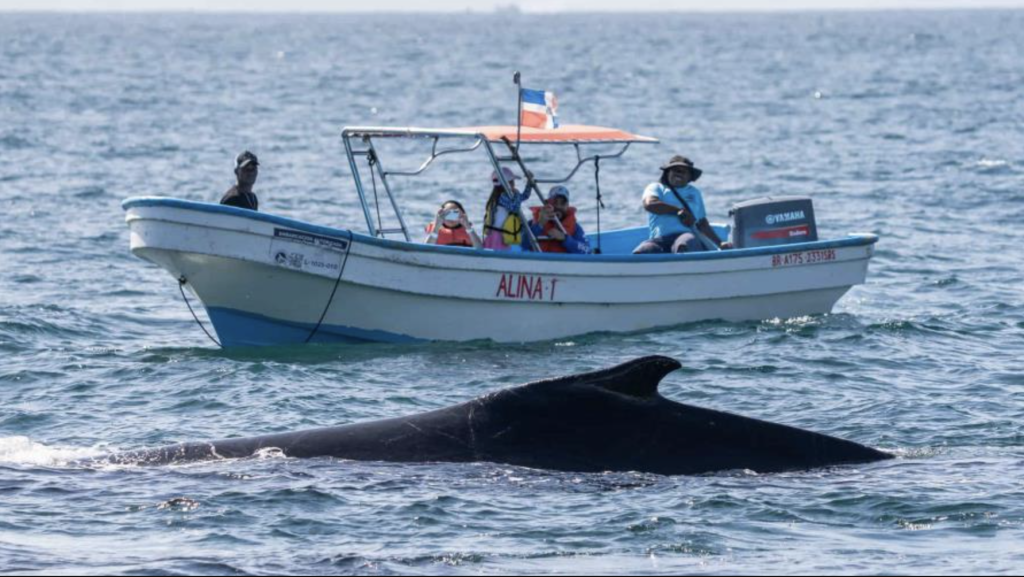
The World Wide Fund for Nature (WWF) reports on the findings of the scientific whale expedition carried out by the Caribbean Cetacean Society (CCS) in Samaná Bay, Navidad Bank, and Silver Bank in the Dominican Republic. The study provides strong evidence that there are more whales than expected.
The WWF says the research comes at a critical time. Although humpback whale populations have recovered in many places, whales still face increasing threats from tourism, shipping, underwater noise, and climate change. These factors can disrupt their natural behavior, especially during the calving season.
The researchers highlight they witnessed signs of human disturbance. On several occasions, whale-watching boats came within just a few meters of calves, which is far too close. This underscores the need for better regulation of tourism. Responsible tourism can support the animals instead of harming them. The CCS expedition provided valuable scientific data to help strengthen tourism and shipping policies in the region and offer the whales a safer future.
Founded in 2020 by two Caribbean biologists, the Caribbean Cetacean Society (CCS) is dedicated to the protection of cetaceans through international cooperation in the Caribbean, bringing together NGOs, researchers, governments, and citizens to ensure their conservation.
The recent CCS research confirmed the northern and northeastern coastal area of the Dominican Republic is an important nursery for whales. This is the first time in more than 30 years that researchers have conducted coordinated surveys with standardized methods to study humpback whales in these important breeding areas in this region.
The study establishes that there are more whales in the waters off the northern and northeastern coasts of the Dominican Republic than expected. Caribbean Cetacean Society (CCS) conducted the expedition in partnership with WWF, Blue Marine Foundation, the Ministry of Environment of the Dominican Republic, Cebse, Fundemar, Fondo Marena, Ecobahia, Heol Expedition, and Starvoiles.
Between mid-February and mid-March 2025, researchers of CCS carried out the studies across Samaná Bay, counting whales and documenting their behavior. The results showed that more whales use the bay than previously thought, with an average density of one whale per three square kilometers. At the time of the expedition, an estimated 60 to 140 whales were present in the bay at once, which is an impressive number. This marks an increase compared to earlier studies from the 1980s and 1990s, confirming that Samaná remains one of the most important humpback whale hotspots in the Caribbean.
Nursery for humpbacks
Scientists encountered mother-calf pairs, solitary adults, and competitive male groups that highlights Samaná Bay’s vital role as a nursery where whales give birth, nurse, and raise their young. After their work in Samaná, the team sailed to Navidad Bank, north of the Dominican Republic, where they conducted a pilot study using both visual and acoustic methods. Results there were even more striking: researchers recorded 321 sightings in just two days. At times, more than 100 whales were likely present in the area.
For the first time, researchers observed mother-calf pairs in Navidad Bank. Until now, it was believed that this location lacked sufficient reef shelter to raise young. This unique finding highlights the need to update conservation measures.
During the expeditions, scientists observed a wide range of humpback behaviors. From singing males and solitary travelers to male groups, and calves mimicking their mothers’ actions like breaching and tail slapping. These observations suggest that Samaná and Navidad Bank are not only nurseries, but also important learning grounds where young whales develop the skills they need to survive.
Read more:
WWF
CCS Study
CCS
French Embassy
Diario Libre
24 July 2025

